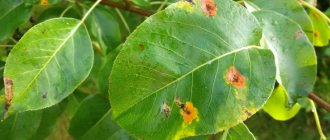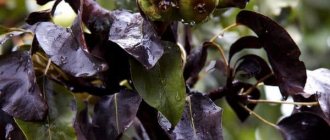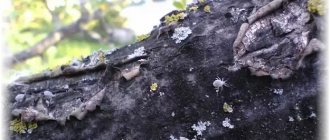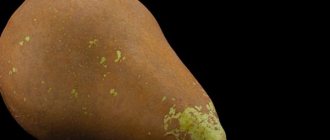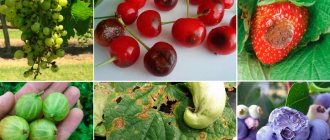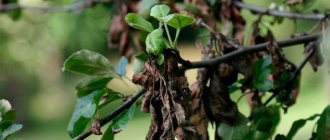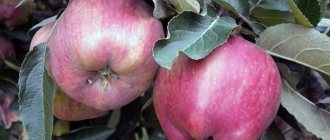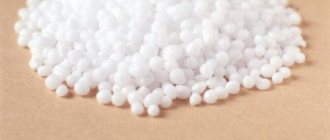How to tell if there is rust on juniper
Most often, you can discover that a juniper bush has been affected by a disease in the spring. At this time, the plant’s immune system is still weak after a difficult winter period.
The following factors aggravate her weakness:
- excessive soil moisture after floods, rising groundwater levels;
- return frosts;
- sudden temperature changes that damage the bark, thereby making it vulnerable to the penetration of pathogens.
Did you know? In ancient times, juniper bushes were credited with magical properties. They took their branches with them on the road as amulets, so that they would not encounter troubles along the way.
Infectious diseases caused by fungi pose a huge danger to coniferous shrubs . One of the most unpleasant diseases, which can significantly reduce the decorative value of a plant and even destroy it, is rust caused by pathogenic fungi Gymnosporangium confusum, G. juniperinum, G. sabinae.
You can tell that they have settled on a bush by the characteristic symptoms:
- the appearance of bright orange fruiting bodies in May – June;
- thickenings, “swellings” on the branches;
- drying of shoots;
- needle fall.
When infected with blister rust, thickened, swollen, curved areas and spider-like growths appear on the branches . The plant looks depressed. After a year and a half, in the spring, a jelly-like substance forms in them, in which spores mature, which are subsequently carried throughout the area over a distance of several hundred meters.
Biatorella canker of juniper
The causative agent is the fungus Biatorella difformis. With mechanical damage to the branches over time, this fungus causes bark necrosis. The fungus spreads in the tissues of the bark, it turns brown, dries out, and cracks. The wood gradually dies and longitudinal ulcers form. Over time, rounded fruiting bodies form. Damage and death of the bark leads to the needles turning yellow and drying out. The infection persists in the bark of the affected branches. Control measures. Like when juniper branches dry out.
Sources of the disease
Juniper is one of the main sources of infection with the disease the article describes. Finding themselves in a favorable environment from plant debris, from soil or from an infected seedling, fungal spores ripen and spread throughout the area to other plants . The next stage of development of the fungus occurs on rosaceous crops. Orange spots form on their leaves, with black dots visible on the surface. The lower plate is covered with galls. In autumn, the spores are again carried by the wind to the juniper, where the fungus continues its harmful effects.
Important! Since the development of the fungus Gymnosporangium sabinae requires 2 hosts - juniper and a representative of the Rosaceae (pear, apple, serviceberry, hawthorn, rowan, quince), these crops should be planted at a great distance or a barrier of other plants should be created between them.
High humidity and frequent rains contribute to the spread of the disease . Spore particles are carried by wind and insects. Since tens of billions of spores can ripen on a single plant at one time, the disease spreads very quickly. It will take a long time to fight her. Many summer residents fail to save diseased bushes and trees. In addition to rosaceous crops, intermediate hosts also include coltsfoot, ragwort, sow thistle, and marian grass.
The favorable temperature for rust development is +18°C . In general, spores ripen in a wide temperature range of +3...+30°C and at high air humidity, reaching 84–91%.
Video: rust on juniper
Tracheomycosis wilt (fusarium) of juniper
The causative agents of the disease - the fungi Fusarium oxysporum and F. sambucinum - cause rotting of the root system. The mycelium penetrates the vascular system and fills it, the roots of the junipers turn brown. The access of nutrients to the crown is stopped, starting from the upper shoots, the needles turn yellow, red and fall off, and the plants themselves gradually dry out. Young plants are most affected. Since fungi spread through blood vessels, the disease may occur in a latent form at first. On the affected parts of plants, especially on the roots, with high humidity, grayish-white sporulation of the fungus appears.
The infection persists in plants, in affected plant debris, and is often spread through contaminated planting material or contaminated soil.
The disease is common in low areas with stagnant water, on heavy clay soils and in insufficient plant lighting.
Control measures. Timely culling and destruction of all dried plants along with roots, destruction of affected plant debris. Compliance with agricultural technology. For prevention, before planting, young plants with an open root system are treated with a solution of one of the preparations: Baktofit, Vitaros, Maxim. At the first symptoms of wilting and root rot, water the soil under the plants with a solution of one of the drugs: Fitosporin-M, Alirin-B, Gamair. Carry out preventive and eradicating spraying and spilling the soil with a 0.2% solution of Fundazol.
How to fight rust: treatment
Treatment consists of removing and burning diseased branches, disinfecting cut sites, treating with chemicals, and applying fertilizers. The described disease should be treated with broad-spectrum fungicides . At the initial stages of the disease, Fundazol, Bayleton, Skor, Topaz, and Bordeaux mixture are effective. Treatments should be carried out in the spring and in August - September. The weather should be warm, windless, cloudy.
Spraying recommendations:
| Drug name | Number of sprays |
| Bordeaux mixture (2–3%) | 3-4 |
| "Topaz" | 3-4 |
| "Saprol" | 6 |
| "Ditan" | 6 |
You can process the crown 4 times in the following sequence:
- the first and second stages - Bordeaux mixture or “Kuprosil”, “Champion”;
- the third - “Tiovit”, colloidal sulfur;
- fourth - “Propi Plus”.
All plants - conifers and fruits and berries - are subject to treatment at the same time . Treatments will differ in that conifers can be sprayed a large number of times and over a long period. Fruit plants, as a rule, are sprayed no more than 4 times, stopping treatment at least a month before harvest.
All these actions will be effective only until sporulation organs appear on the culture . After this, there will be no point in treatment - it is better to uproot the bush and burn it to avoid infecting other crops. After uprooting, the soil in the area where it grew should be watered with boiling water, copper sulfate, and Bordeaux mixture.
Alcohol solution
Garden tools should be treated with an alcohol solution before and after pruning affected branches . You can also lubricate cut areas with it.
Tools should be treated every time you plan to trim another plant, and their blades can also be calcined. This procedure will prevent the spread of the disease throughout the area.
Important! When working with chemicals, personal safety precautions should be observed. Spraying should be carried out while protecting the body with a special suit, the respiratory tract with a mask, the eyes with goggles, and the hands with gloves.
Copper sulfate solution
Disinfection of areas from which diseased shoots were cut can be carried out with a 1% solution of copper sulfate.
When using this drug to spray the crown, you should adhere to the following sequence:
- For the first time, treat with copper sulfate before the buds open.
- After 2 weeks, resort to using one of three remedies: copper oxychloride, Ordana, Oxykhoma (or Abiga-Pika).
- The third treatment should be carried out with “Kuprosil” or Bordeaux mixture (1%).
- If necessary, after 10–12 days, treat again with Bordeaux mixture.
Garden var
To make the wounds heal faster after pruning, they are lubricated with garden varnish . For the same purpose, oil paint on drying oil is used. There is also a more modern and easy-to-use product - RanNet paste. You can buy it at any gardening store.
Nectriosis of the bark of juniper branches
The causative agent is the fungus Nectria cucurbitula. Numerous brick-red sporulation pads with a diameter of up to 2 mm are formed on the surface of the affected bark; over time they darken and dry out. The development of the fungus causes the death of the bark and phloem of individual branches. The needles turn yellow and fall off, the affected branches and entire bushes dry out. The infection persists in the bark of the affected branches and plant debris. Its spread is facilitated by dense plantings. Control measures. Like when juniper branches dry out. Before the first use, any drug must be tested on one plant. If the plant’s condition has not worsened within 24 hours, the drug can be used on all protected plants of this species. For greater effectiveness, it is recommended to alternate medications. Be careful when using plant protection products. Always read the label and product information before use. Carry out processing in compliance with all safety rules.
Do all junipers spread rust?
All juniper bushes are the main host or intermediate in the spread of rust. Two varieties are most susceptible to this disease: Virginia and Cossack.
Mushrooms that cause rust are capable of forming various types of spores - monoecious and heteroecious . The development of the first of them occurs on one shrub and closely related plants. Heterogeneous spores infect different plants. Thus, the common juniper becomes the main host, and the apple tree becomes an intermediate host. Pears become infected after partial development of the fungus on juniper bushes belonging to the Cossack species.
Did you know? The smell of juniper can have a healing effect on the human body. Representatives of the Indian tribes of North America sent patients with tuberculosis of the skin, bones, and joints to the thickets of this plant for treatment.
Thus, rust is a dangerous fungal disease that leads to the loss of decorative properties of juniper shrubs and to its death. It is difficult to get rid of fungi that have settled on the site. To avoid illness, you should not ignore the recommended preventive measures, identify the presence of a pathogenic fungus on the plant in the early period, and begin competent treatment as quickly as possible.
Brown juniper schutte (brown coniferous snow mold)
The causative agents are the fungi Herpotrichia juniperi and N. nigra. The disease develops under snow at temperatures not lower than +0.5 °C. In spring, the branches of junipers freed from snow are covered with yellow or brown needles. It is entangled in cobwebby mycelium, which is grayish at first, but gradually becomes black-brown, dense and as if gluing the needles together. Over time, black spherical small fruiting bodies of the wintering stage of the pathogen fungus form in the affected needles. The needles turn brown, dry out and do not fall off for a long time. This greatly reduces the decorative value of plants. Thin branches die. The infection persists in the affected plant debris and in the affected needles. The development of brown chute is promoted by high humidity and dense plants. Young plants are most susceptible to damage. Control measures. Timely pruning of dried branches, preventive spraying of plants in spring and autumn with 1% Bordeaux mixture or its substitutes (Abiga-Peak, HOM). If the disease manifests itself to a severe degree in the summer, spraying is repeated with one of the same drugs.
How to cover a Christmas tree for the winter. How to choose a place for a Christmas tree
The key to properly planting a spruce tree on a site is choosing the right place for it. There are three things to pay attention to:
- wind
- illumination
- the soil
Wind
When determining a place to plant spruce on a site, it is important to remember that due to the characteristics of the root system, the tree is not very stable in strong winds. This is due to the fact that the tap root gradually dies off and the tree is held in the ground by surface roots. Winds are especially dangerous for tall forms older than 10-15 years, therefore, it is better for them to choose a place well protected from the wind.
Illumination
When choosing a place on the site for planting fir trees, you should give preference to a well-lit place. This is especially important for varieties with multi-colored needles. Such trees in a heavily shaded place will simply lose the decorative coloring of their needles and cones. In poorly lit places, annual growth will sharply decrease, the tree will wither, and may even die. It should be borne in mind that tall forms can very quickly outgrow their sun-loving neighbors and block the sunlight for them, so when choosing a place you need to take this into account.
The soil
Almost all spruces prefer to grow in acidic or slightly acidic soils. In terms of density, it is better to choose loamy or sandy loam soils with good air and water permeability, with a moderate amount of organic matter.
Soils that are too loose or too heavy can be improved by adding sufficient clay or sand. Young spruce trees, especially those in the first 10 to 15 years of life, can die from close groundwater.
When choosing a location, special attention should be paid to the size of this type of tree; a spruce tree that grows slowly in the first years of its life can later grow into a multi-meter beauty and its crown will cover the house, neighboring plants, pedestrian paths, and paths.
How to cover thuja seedlings for the winter. How to cover a thuja for the winter?
Landscape designers love working with thuja. This popular coniferous plant is characterized by rapid growth. But for this, the thuja needs to be properly cared for, especially in the first years after planting.
If a tree is planted in the spring, it will have time to adapt after transplantation.
Small roots grow on its roots, absorbing nutrients from the soil. When planting in autumn, such root hairs will not have time to grow, and it will be more difficult for the tree to take root.
In early spring, when the sun begins to warm up, the needles intensively evaporate moisture, but little comes from the ground. Thuja seedlings begin to “burn out.”
To prevent this from happening, the green beauty of the thuja must be covered. Let's find out how to prepare the thuja for the coming winter and how to properly cover the tree for the winter.
Preparing thuja for winter
Thuja is a frost-resistant plant. It feels great even at -30°C. However, young trees can get severely burned from the bright winter sun. To preserve thuja in winter, in late autumn, usually before snow falls, you need to cover the seedlings.
This should be done at least for the first two years after planting, when the trees are still very fragile and tender. And if the winter turns out to be frosty and sunny, then even mature trees may suffer.
Therefore, they can be shaded from the sunny side with a fine mesh.
There are several options for covering thuja for the winter.
- Cover with gauze or light burlap. Some gardeners do not recommend using non-woven material for these purposes, for example, spandbond or lutrasil.
It is believed that such materials do not allow air to pass through well, moisture will accumulate under them, and this, in turn, threatens to dampen the plant during a thaw.The gauze fabric must be cut into sheets equal in length to the distance from the soil to the highest branch in the crown. Carefully secure the gauze first to the crown and then to the base of the tree. The next piece of gauze must be stapled to the previous one. You will need several pieces of fabric to completely cover the entire tree.
Do not pull the gauze too tightly, as it will shrink when wet.
How to cover a young thuja for the winter
At the base of the thuja, for the same reason, do not tighten the cover too tightly.
- The shelter is more complex, which can be done by a professional. To begin with, you need to install a wooden frame around each thuja tree. Light-colored material is then stretched around the frame to protect the wood from the sun. Remember that you need to handle the thuja with care, not to stretch or injure the tree branches.
- The easiest option for covering thuja for the winter is to install wooden shields near the seedlings on the sunny side, which will shade the young plants from bright sunlight.
- In specialized stores you can purchase a ready-made structure in order to properly preserve thujas in winter.
When to plant juniper in the fall
Not everyone knows that autumn is a good time of year for planting juniper. If the seedling has a powerful rhizome, then if planted before November, it has every chance of taking root and successfully adapting to low winter temperatures. Caring for juniper in the fall and preparing for winter is an undertaking that requires a serious approach.
Important! The end of winter is not a reason to relax. A coniferous tree can also die in the spring, when the rooting process is completed: at this time, recurrent frosts occur. The cause of the trouble may be a weak, diseased root or a disturbance in the earthen coma. It is worth noting that it is recommended to start small specimens in the spring. This way, before winter frosts, they will be able to take root and withstand bad weather.
Important! In summer, juniper is not transplanted, since the plant does not tolerate any manipulation during drought. The best time for planting is the second half of October.
Modern scheme for treating pears against rust
| Time of processing | Drugs and scheme of their use |
| In spring before and after flowering | Skor + Fitolavin (2 ml per 10 liters of water). Phytolavin suppresses bacteria that always accompany fungi. |
| May June | During the growing season, drugs are used to combat scab and moniliosis - Abiga-Pik, Rakurs, HOM, Khranitel. |
| End of summer | Skor + Fitolavin (2 ml per 10 liters of water). |
| A few weeks before leaf fall | Revus (6 ml per 5 liters of water). This drug destroys fungi and restores the plant’s immunity. |
It is quite difficult to cope with rust - after localizing the source of the disease, the tree has to be treated for several more years. Therefore, follow the prevention tips and take all available measures in a timely manner to prevent the spread of the disease in your area.
How to treat a diseased plant?
If signs of rust appear, not only pears, but also junipers need to be treated.
SKOR copes well with this disease . Its peculiarity is the duration of systemic action. Treatment begins within two hours, the main effect can be achieved within three weeks. The drug can be used even in partly cloudy conditions with intermittent rain. At air temperatures below +12°C it acts more slowly.
There is an analogue - “ Revus Top ”. This is a new fungicide, more effective and fast-acting than Skor.
Many popular garden “medicines” (“ Bordeaux mixture ” and “ Fitosporin ”) help little, judging by numerous reviews.
You can try “ Fundazol ” (“ Benlat ”, “ Benomil ”) and the fast-acting systemic fungicide “ Bayleton” .
I was praised for the drugs Ditan M-45 and Kuproxat .
Some gardeners treat pears with urea . Unfortunately, the result is not always satisfactory, because you have to thoroughly wet absolutely all the branches and leaves with a concentrated solution. Not only those that remained on the tree, but also those lying on the ground. And this task is difficult, because... trees are tall. Repeated treatment of pear and juniper is carried out in the spring after the leaves bloom (before flowering begins).
I was advised to try the drug " Abiga-Peak ". It contains copper, is easy to use, economical, is not washed off by rain, and should be processed in dry, windless weather.
Signs of rust infection
Once settled on juniper, the disease usually becomes chronic. The fungus spreads through needles, cones and shoots and forms a mycelium. Subsequently, swellings, swellings and wounds appear on the juniper. In spring, orange gelatinous organs appear on parts of the plant, in which spores mature that infect the pear.
In favorable spring weather (warm and humid), spores are easily separated from the “storage sites” and are carried by the wind over a distance of several hundred meters to 40-50 km and infect young pear leaves, and subsequently the fruits.
The first symptoms appear as round yellow-orange spots on the leaves that appear after the pear blossoms. This usually happens in the second half of April. Then the rust affects the petioles, and in the years of epidemics - shoots and fruits.
In July, the appearance of rust becomes noticeable on most of the leaves. On the upper side, irregular spots of garnet or light brown color (1-1.5 cm in diameter) with small black dots form.
The disease reaches its maximum manifestation in the fall. Then, on the back side of the leaf, on the swollen rust spots, spindle-shaped outgrowths - “horns”, filled with a mass of fungal spores, form. They infect junipers by germinating in them and forming mycelium in the bark and wood. Thus, the disease moves in a circle between two hosts: from juniper to pear and back.
The infection cycle repeats every 1.5-2 years. But neither juniper nor pear can infect themselves.
Rust usually does not cause serious damage to trees. But with massive damage and early leaf fall, their ability to photosynthesis deteriorates. There are more and more orange spots on the leaves. Rust inhibits the growth of shoots, they become thick and short, and severely damaged ones dry out completely. This weakens the trees. If the disease repeats from year to year, the plants can become very weak and freeze. Then it’s time to think about how to treat rust on a pear.
Juniper care in autumn
There are no special requirements for caring for juniper in the fall. It is distinguished by good endurance, surviving low winter temperatures and drought in the heat, but provided that the root system has completely taken root. The transplanted plant needs watering, since the weakened root cannot always go deep into the bowels of the earth to recharge. It would be useful to irrigate the seedling.
How to water juniper in autumn
Only a year after successful planting, juniper can not be watered in the fall and even in the summer. If the heat is aggressive and dries out the soil, water the plant abundantly, but not more than once every 14 days.
Important! For denser growth of lush, rich greenery, it is recommended to irrigate the seedling over the entire surface. It is better to carry out the procedure after sunset or early in the morning so as not to cause leaf burn.
How to properly prune juniper in the fall
Pruning of common juniper in the fall is carried out if the plant is grown for the purpose of decorating the site. They are formed figuratively or simply remove excess shoots. It is also necessary to eliminate dry, broken, limp branches. The rules for cutting seedlings are universal for all conifers. The plant must be rooted, without signs of disease. For some varieties it is impossible to form a crown.
Pruning juniper in the fall is not always carried out according to the plan. The choice of shape should correspond to the type of landscape. Sometimes gardeners leave a natural crown.
What to feed
When planting juniper in the fall, before winter, the plant should be saturated with fertilizers. Thus, before the cold weather, the easily vulnerable root system of the seedling is supported.
For fertilizer, humus that has been left in a pile for at least 1.5 years is used.
Important! Fresh manure is not used due to the abundance of ammonia.
If humus was added to the soil during planting, the manipulation is not repeated for the next three years. The fact that there is an excess of nitrogen in the soil will be indicated by the yellow color of the needles and dry branches.
To add compost, the top layer of soil above the roots is dug up, watered and mulched.
